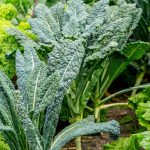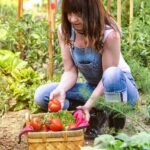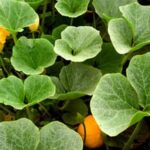Container vegetable gardening has become increasingly popular for its convenience, flexibility, and suitability for urban dwellers. This method of gardening allows individuals to grow their own fresh produce even in small or limited spaces, making it a perfect solution for those with little to no outdoor garden space.
In this article, we will explore the ins and outs of container vegetable gardening, including how to get started, choosing the right containers, selecting the perfect vegetables for your containers, preparing the soil and planting, providing adequate care and maintenance, maximizing space and resources, overcoming common challenges, and finding inspiration from success stories.
Container vegetable gardening offers numerous benefits over traditional in-ground gardening. Firstly, it provides flexibility in terms of placement and mobility. Containers can be placed on balconies, patios, or indoors near windows to maximize sunlight.
Secondly, container gardening requires less maintenance and is generally easier to manage compared to traditional gardening. Finally, it allows for greater control over the soil conditions which can lead to healthier plants and better yields. In this section of the article, we will delve into the various advantages of container vegetable gardening and how it can be a game-changer for many aspiring home gardeners.
Getting started with container vegetable gardening involves a few key steps that are essential for success. It’s important to properly prepare the soil and choose suitable containers for your chosen vegetables. Additionally, understanding which vegetables are best suited for growing in containers is crucial.
We will discuss all these aspects in detail throughout this article so you can have a clear roadmap towards creating your own thriving container garden. With our comprehensive guide on container vegetable gardening at your fingertips, you’ll be well on your way to enjoying a bountiful harvest from your own home-grown produce.
Choosing the Right Containers
When starting a container vegetable garden, one of the first steps is to choose the right containers for your plants. The type of container you choose can have a significant impact on the health and success of your vegetables. There are various options available, from traditional terracotta pots to modern fabric containers, each with its own set of advantages and considerations.
One important consideration when choosing containers for vegetable gardening is size. Larger containers provide more room for root growth and water retention, while smaller containers may be better suited for shallow-rooted vegetables. It’s also essential to consider drainage holes, as proper drainage is crucial for preventing waterlogging and root rot.
For those looking to save money or get creative, DIY container options are also a popular choice for container vegetable gardening. Upcycling old buckets, crates, or even pallets can make for unique and affordable container options. Additionally, repurposing items such as plastic storage bins or kiddie pools can provide larger spaces for growing multiple vegetables in a single container.
It’s important to remember that the chosen container will directly impact the overall health and productivity of your container vegetable garden. By carefully considering size, material, and drainage needs, you can ensure that your vegetables have the best possible environment to thrive in.
| Container Type | Advantages |
|---|---|
| Terracotta Pots | Durable and classic aesthetic |
| Fabric Containers | Excellent drainage and air pruning |
| DIY Options | Cost-effective and customizable |
Selecting the Perfect Vegetables for Containers
When it comes to container vegetable gardening, selecting the right vegetables is crucial for a successful harvest. Not all vegetables are well-suited for container gardening, so it’s important to choose varieties that thrive in limited space. Some of the best vegetables to grow in containers include tomatoes, peppers, lettuce, spinach, carrots, radishes, and herbs like basil and parsley.
When choosing the perfect vegetables for your container garden, consider the mature size of the plants. Compact or dwarf varieties are ideal for containers, as they won’t take up too much space or compete with other plants for resources. It’s also essential to select vegetables that have shallow root systems and don’t require a lot of depth to grow.
Another factor to consider when selecting vegetables for container gardening is the climate and growing conditions in your area. Some vegetables may be better suited for your specific location based on factors such as sunlight exposure and temperature. Researching which vegetables are well-adapted to your local environment can help ensure a successful container garden.
In order to make the most of your limited space in container vegetable gardening, consider growing a variety of vegetables that can complement each other. For example, planting lettuce or spinach around taller plants like tomatoes can help maximize space and provide a diverse harvest from your container garden. With careful selection and planning, you can grow a bountiful assortment of delicious vegetables in even the smallest of spaces using container vegetable gardening techniques.
Preparing the Soil and Planting
Container vegetable gardening requires careful attention to soil preparation for successful plant growth. Here are the steps you need to follow to ensure that your vegetables thrive in their containers:
- Importance of soil preparation for container vegetable gardening: The quality of the soil directly impacts the health and growth of your vegetables. Since container plants cannot access nutrients from the ground, it’s crucial to provide them with a nutrient-rich soil mix from the start.
- Choosing the right soil mix for container vegetable gardening: When selecting a potting mix, look for options specifically formulated for vegetables or fruits. These mixes typically contain a balanced combination of peat moss, perlite, vermiculite, and organic matter to promote proper drainage and root development.
- Step-by-step guide to planting vegetables in containers: Start by filling your containers with the appropriate soil mix, leaving enough space at the top for watering. Then, carefully transplant your vegetable seedlings or sow your seeds according to their specific planting depth and spacing requirements.
Remember that proper soil preparation is essential for setting the stage for healthy and productive plants in your container vegetable garden. By choosing the right soil mix and following correct planting techniques, you can give your vegetables a strong foundation for growth.
Providing Adequate Care and Maintenance
Watering and Fertilizing Tips
One of the most important aspects of container vegetable gardening is ensuring that your plants receive adequate water and nutrients. Due to the limited space in containers, the soil can dry out quickly, especially during hot weather. It’s essential to check the moisture level of the soil regularly and water your plants whenever necessary.
Additionally, using a good-quality organic fertilizer can help ensure that your vegetables have access to the nutrients they need to thrive. Understanding the specific water and nutrient requirements of each vegetable you are growing will help you provide them with the care they need to produce a bountiful harvest.
Managing Pests and Diseases
Just like traditional gardens, container vegetable gardens are also susceptible to pests and diseases that can harm your plants. Regularly inspecting your plants for any signs of pests or diseases is crucial in preventing an infestation that could damage all your hard work.
There are many organic pest control and disease management methods available for container vegetable gardening, such as using natural predators, companion planting, and providing adequate air circulation around your plants. Being proactive in identifying and addressing these issues early on can save you from a lot of frustration later on.
Pruning and Harvesting Techniques
Proper pruning can be essential for maximizing the yield and health of your container-grown vegetables. Removing dead or diseased foliage, as well as trimming back excessive growth, can promote better air circulation among your plants and prevent overcrowding. Additionally, knowing when to harvest your vegetables at their peak ripeness can significantly impact their flavor and nutritional content. Learning about specific harvesting techniques for different vegetables is crucial in ensuring an abundant harvest from your container garden.
Overall, providing adequate care and maintenance for your container vegetable garden requires attentiveness and knowledge about the specific needs of the vegetables you’re growing in containers.
Follow these tips to ensure that your container garden flourishes throughout the growing season while maintaining its health and productivity.
Maximizing Space and Resources
Tips for Maximizing Limited Space in Container Gardening
When it comes to container vegetable gardening, the limited space available can sometimes be a challenge. However, there are several strategies that can help maximize the space in your container garden. One tip is to use vertical gardening techniques, such as trellises or stakes, to allow vining plants like tomatoes or cucumbers to grow upwards instead of taking up valuable horizontal space. Additionally, utilizing hanging baskets and wall-mounted planters can help make use of vertical surfaces for planting.
Companion Planting and Vertical Gardening in Containers
Another useful technique for maximizing space in container vegetable gardening is companion planting. Certain plants naturally complement each other and can be grown together in the same container to optimize space and resources.
For example, planting basil with tomatoes not only saves room but also serves as a natural pest deterrent for the tomatoes. Additionally, incorporating vertical gardening structures into your containers, such as using an obelisk for climbing plants like beans or peas, allows you to make the most of the available space while still reaping a bountiful harvest.
Creative Ways to Make the Most of Your Container Garden
Beyond traditional planting methods, there are many creative ways to make the most of your container garden. Utilizing compact varieties of vegetables, interplanting different types of vegetables within one container, and even using double-decker or tiered containers are all innovative methods for maximizing space and resources in your container garden.
Another approach is square foot gardening principles which involve dividing your containers into square foot sections to efficiently plan out what will be planted where within each given area. These creative approaches not only maximize space but also add visual interest and diversity to your container garden.
Overcoming Common Challenges
Container vegetable gardening comes with its own set of challenges, but with the right knowledge and strategies, these obstacles can be easily overcome. Here are some common challenges that container gardeners may face, along with tips on how to deal with them:
- Dealing with issues like root-bound plants and overwatering:
- Choose the right size containers for your vegetables to prevent root-bound plants.
- Regularly check the moisture level of the soil before watering to avoid overwatering.
- Consider using self-watering containers to help regulate water absorption.
- Adjusting for environmental factors such as sun and wind exposure:
- Place your containers in areas that receive adequate sunlight for the specific vegetables you are growing.
- Use windbreaks or move containers to more sheltered areas if wind exposure becomes a problem.
- Consider using shade cloth during especially hot days to protect your plants from excessive sun exposure.
- Troubleshooting common problems in container vegetable gardening:
- Monitor your plants regularly for signs of pests or diseases and take prompt action as needed.
- Adjust watering and fertilizing schedules based on the specific needs of each type of vegetable you are growing.
- Research specific problems or seek advice from experienced container gardeners if you encounter unfamiliar issues.
By being proactive and attentive to the needs of your container vegetable garden, you can effectively address these common challenges, leading to a successful and bountiful harvest. With a little patience and persistence, you can enjoy the rewards of growing your own fresh produce in limited space.
Success Stories and Inspiration
Container vegetable gardening has become increasingly popular among urban dwellers, especially those who are living in apartments or homes with limited outdoor space. With the right containers and techniques, growing your own vegetables is not only possible but also rewarding. Many individuals have successfully created thriving container vegetable gardens, providing inspiration for others to follow suit.
One example of a successful container vegetable garden is that of Sarah Smith, a city dweller who transformed her small balcony into a bountiful vegetable oasis. By utilizing vertical gardening techniques and strategic placement of containers, she was able to grow an assortment of vegetables such as tomatoes, peppers, herbs, and even small fruits like strawberries.
Sarah’s story serves as proof that with creativity and dedication, it is possible to achieve a productive container garden even in the most limited spaces.
Another inspiring success story comes from a group of elementary school students who embarked on a container vegetable gardening project as part of their science curriculum. With the guidance of their teacher and the support of the school administration, these students planted various vegetables in recycled containers donated by the local community.
Not only did this project teach the students valuable lessons about plant biology and environmental sustainability, but it also resulted in an abundant harvest that was used to supply fresh produce for the school cafeteria.
These success stories illustrate how container vegetable gardening can be accessible to people from all walks of life. Whether you’re an individual looking to grow your own food at home or a group interested in fostering environmental awareness through gardening projects, container vegetable gardening offers endless possibilities for creativity and inspiration.
| Success Stories | Inspiration |
|---|---|
| Sarah Smith’s balcony garden | Creative use of limited space |
| Elementary school student project | Environmental education through gardening |
Conclusion
In conclusion, container vegetable gardening offers a wealth of benefits and opportunities for gardeners of all skill levels. From the flexibility to grow in limited spaces to the ability to control soil quality and environmental factors, container gardening provides a practical solution for those looking to grow their own produce. By choosing the right containers, selecting suitable vegetables, preparing the soil properly, providing adequate care, and maximizing space and resources, anyone can create a thriving container garden.
As more people become interested in sustainable living and self-sufficiency, container vegetable gardening presents an accessible way to connect with nature and reduce reliance on store-bought produce. With the right knowledge and techniques, it is possible to grow a wide variety of vegetables in containers, allowing even those without access to traditional garden plots to enjoy fresh homegrown produce. Whether you have a balcony, patio, or small yard, there is always potential for a successful container garden.
For those who are inspired by the possibilities of container vegetable gardening, there are countless resources available to help guide your journey. Whether through online communities, local gardening groups, or informative publications, there is no shortage of information available for those seeking further guidance.
As you embark on this exciting venture into container gardening, consider reaching out for advice and support from experienced gardeners who can offer valuable insights and encouragement as you cultivate your very own flourishing container vegetable garden.

If you’re looking to get into vegetable gardening, or are just looking for some tips on how to make your current garden better, then you’ve come to the right place! My name is Ethel and I have been gardening for years. In this blog, I’m going to share with you some of my best tips on how to create a successful vegetable garden.





